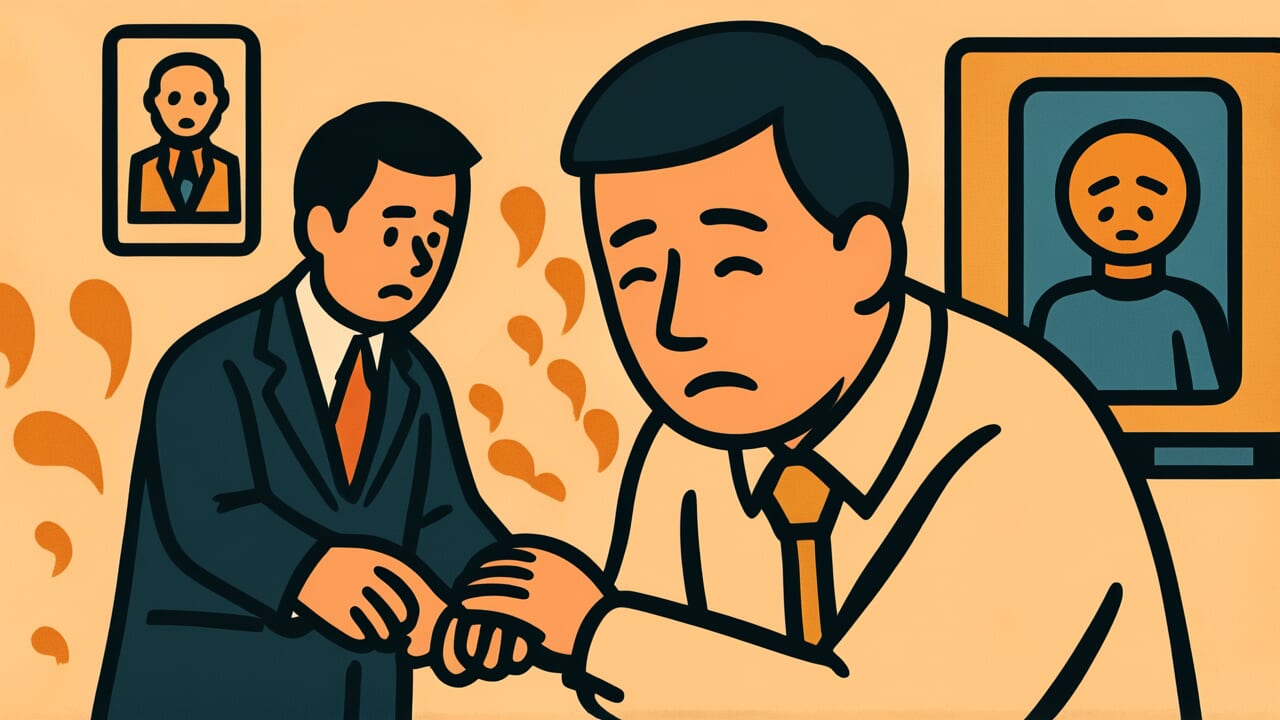How to Read “You can endure someone else’s pain for three years”
Hito no itai no wa sannen demo shinbō suru
Meaning of “You can endure someone else’s pain for three years”
This proverb reveals a basic truth about human nature. People offer sympathy when others suffer, but they can tolerate that suffering indefinitely because they’re not experiencing it themselves.
You use this saying when pointing out someone’s attitude. They say “That’s so hard for you” or “I feel sorry for you,” but they’re really just brushing it off as someone else’s problem.
You can also use it as self-reflection. It reminds you to check whether you’re too easily telling others to endure hardship.
The psychology behind this expression hasn’t changed in modern times. When people click “like” on someone’s misfortune on social media or casually say “hang in there,” this same mindset might be at work.
Your own pain feels unbearable even for a moment. But you can be surprisingly tolerant of other people’s pain.
This proverb sharply points out this contradictory aspect of human nature.
Origin and Etymology
No clear written records explain the origin of this proverb. However, the structure of the phrase offers interesting insights.
“Three years” appears frequently in Japanese proverbs and idioms. “Three years even on a stone” and “Peaches and chestnuts take three years” use this timeframe.
It serves as a symbolic number representing a long period. The “three years” here doesn’t mean exactly three years. It’s a metaphor for “a very long time.”
This proverb sharply observes a fundamental human trait. It points out, with irony, the selfish side of people who can endure others’ pain and suffering no matter how long it lasts.
The most likely theory suggests it originated among common people during the Edo period. People back then helped each other in their communities, but they understood the difference between what people say and what they really think.
They showed sympathy on the surface, but felt fine inside because the pain wasn’t theirs. Our ancestors had keen observation skills to see through this contradiction in human psychology.
This expression isn’t just criticism. It reflects a calm understanding of human nature, containing both resignation and self-reflection.
People have passed it down through generations with this deeper meaning.
Usage Examples
- My boss leaves right at closing time while watching colleagues work overtime, as if to say “You can endure someone else’s pain for three years.” It’s frustrating.
- Parents easily tell you to endure things, but it’s like “You can endure someone else’s pain for three years”—they can say it because it’s not their pain.
Universal Wisdom
The human nature this proverb reveals is a timeless truth. Why are we so sensitive to our own small pains but so insensitive to others’ great suffering?
It’s because humans are fundamentally self-centered creatures. Pain and suffering travel through your own nerves. Fully understanding another person’s pain is biologically impossible.
No matter how much you use your imagination, you can’t feel someone else’s toothache as your own toothache.
Our ancestors calmly faced this human limitation. That’s why this proverb contains not just criticism, but also resignation and self-reflection.
When you say “You can endure someone else’s pain for three years,” you’re criticizing others while also admitting you’re the same kind of human.
This saying has been passed down for so long because it captures an eternal challenge in human relationships. We know complete empathy is impossible, yet we still try to stand beside others in their pain.
This proverb reflects humans wavering between that effort and its limits. Perhaps knowing your own weakness is the first step toward true compassion.
When AI Hears This
The human brain contains nerve cells called “mirror neurons” that react when you watch others’ actions as if you were doing them yourself. When someone falls, you instinctively feel “ouch” because of this mechanism.
Brain science research has revealed something fascinating. The pain intensity these mirror neurons reproduce is only about one-tenth to one-twentieth of the pain you actually experience yourself.
In other words, if the pain you feel from cutting your finger is “10,” the empathetic pain felt by someone watching is only about “0.5.”
Even more interesting is how this empathy signal rapidly fades over time. Your own pain stays carved in memory, but memories of observing others’ pain significantly fade within days.
This is an energy efficiency issue in the brain. Information not directly related to you is programmed to be deleted quickly.
Considering this neuroscience mechanism, “endure for three years” might not be an exaggeration—it might actually be understated. If the actual pain intensity drops to less than one-hundredth and also disappears from memory, watching others’ suffering endlessly creates almost no biological burden.
Empathy runs on the brain’s energy-saving mode.
Lessons for Today
This proverb teaches modern people the importance of humbly acknowledging the limits of their empathy. When you easily comment “That’s so hard” on social media, do you really understand the other person’s pain?
What matters isn’t aiming for perfect empathy. Rather, it’s honestly admitting “I can’t truly understand.” Then, take concrete action within your capacity.
Small but actual help is far more valuable than words of sympathy alone.
This proverb also teaches you to pause before forcing others to endure. When you’re about to say “Just try a little harder” or “You can endure that much,” is it really for their benefit?
Or can you say it only because you don’t feel the pain yourself?
As long as you’re human, you can’t completely stand in another person’s shoes. But knowing that limitation lets you face people more carefully and more sincerely.
This proverb asks us to accept our own imperfection, yet still maintain the humility to care about others.



Comments